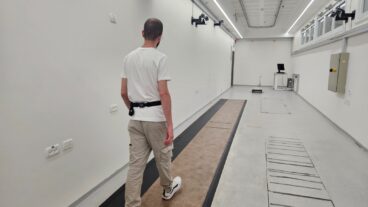A refreshing night’s sleep is just a dream for sleep apnea sufferers who can fall asleep while at work, on the phone or even while driving.Prof. Peretz Lavie of the Technion – Israel Institute of Technology has been doing groundbreaking and comprehensive work on the diagnosis and treatment of a disorder called sleep apnea that affects an estimated 18 million Americans.
Sleep apnea is a serious problem that goes beyond just an inability to get a good night’s sleep. Male sleep apnea sufferers are four to five times more likely to die before the age of 50 than the rest of the population, particularly from cardiovascular disease, strokes and congestive heart failure, while the mortality rate for female sufferers under 50 can be up to 20 times as high as the general population. Although women sufferers seem to be affected by sleep apnea more intensely, it’s primarily a male disease.
The disease takes its name from the Greek word apnea, which means, “without breath.” People with sleep apnea stop breathing again and again during their sleep, often for a minute or longer, and in severe cases, as many as a hundred times during a single night.
“Sleep apnea patients have a higher level of free radicals in their blood stream caused by the decrease in oxygen intake,” Lavie said. “Over time, these free radicals cause blocking of the arteries and heart damage can result.”
Because they don’t have peaceful periods of rest, sleep apnea sufferers feel very sleepy during the day, causing their concentration and daytime performance to suffer. Individuals with sleep apnea frequently experience depression, irritability and sexual dysfunction. They often have learning and memory difficulties and fall asleep while at work, on the phone or even while driving.
Statistics show that untreated sleep apnea patients are three times more likely to have car accidents.
“Clearly, this condition can be very serious if left untreated and undiagnosed,” Lavie said. “That is why early detection is so important.”
Recently, Lavie and his researchers have also discovered that male patients who suffer from sleep apnea produce lower levels of testosterone, resulting in decreased libido and sexual activity.
“For years we have seen sleep-disorder patients complain of decreased libido, but we had no explanation for this phenomenon until now,” Lavie said. “Our studies have shown that therapeutic intervention of sleep apnea is a recommended remedy for certain forms of male sexual dysfunction.”
To provide for early detection, Lavie and a team of researchers at the Technion have developed a sleep apnea tracking device called SleepStrip that was recently approved by the U.S. Food and Drug Administration and is now widely available in the United States.
The patient fastens a four-inch plastic strip to the upper lip before going to bed. Three tiny temperature sensors attached to the strip record when the patient stops breathing. In the morning, the patient removes the strip and returns it to the doctor, who reads the results from the built-in display.
“Rather than spending anywhere from $1,000 to $4,000 in a sleep clinic to diagnose sleep apnea, a patient can use the SleepStrip, which sells for about $100,” Lavie said. “This inexpensive tool allows us to scan entire segments of the population, particularly those most vulnerable to sleep apnea such as adult males between the ages of 35 and 50, severely obese people, and those with high-blood pressure.”
There are no prescribed medications available to treat sleep apnea, Lavie said. The most widely used treatment for the disease is a machine called Continuous Positive Airway Pressure. The CPAP machine delivers air pressure through a small nasal mask that the patient wears while sleeping.
“For many patients CPAP therapy dramatically improves their daytime functioning as well as their general health,” Lavie said. “It is not a cure, but an effective noninvasive therapy.”












